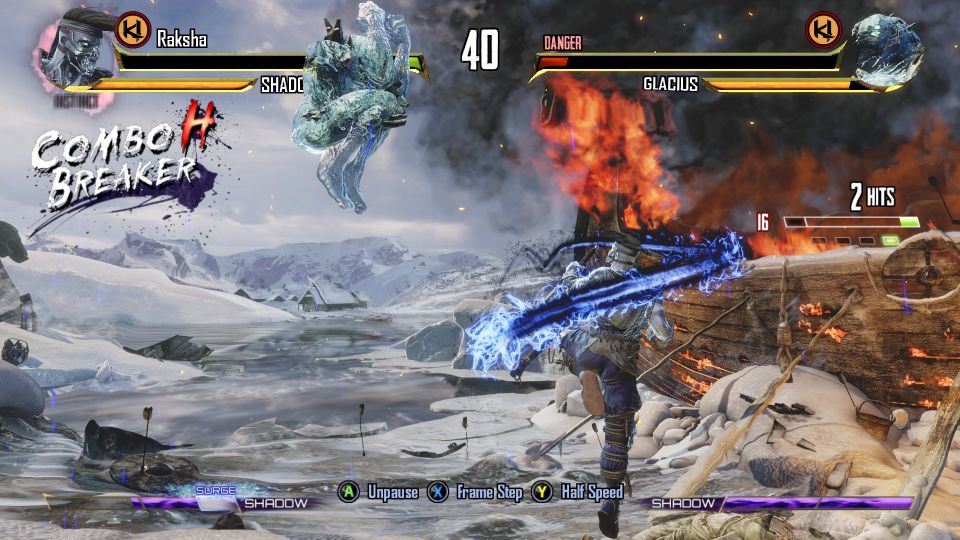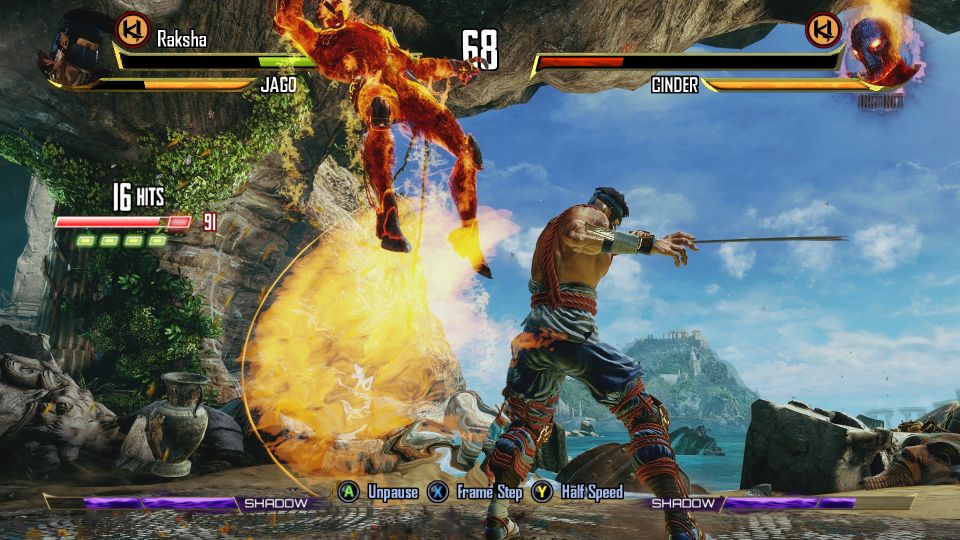Killer Instinct’s Interactive Music System
Preface
In this technical piece, I break down the interactive music system in the 2013 Killer Instinct Reboot for Xbox One. It’s somewhat of an old article as the research I’ve done here came out of a student game I worked on at university. The details are still very much relevant and I’ve refreshed minor tid-bits while keeping the bulk of it intact.

Right off the bat, I’ll state that Killer Instinct has the best soundtrack ever composed for a fighting game, and that’s saying a lot given the existence of both Guilty Gear and Street Fighter. I’ll also go on to state that it’s one of the greatest OSTs of the eighth gen console lineup and one of the greatest video game soundtracks ever composed. The gushing doesn’t stop there. It also has one of the best implemented interactive music systems in any video game.
An interactive music system alters the music in response to player actions and changing conditions in the game. Some notable examples include SSX (2012) which applies a parametric EQ filter to the soundtrack when performing tricks, or Transistor (2014) which vertically remixes the instrumental version of the soundtrack with a vocal-only version depending on the game state.
Music states
Killer Instinct’s music system consists of several different states and each state corresponds to a particular condition in the game itself. The music states are:
- Fighter A Intro
- Fighter B Intro
- Intro
- Normal
- Combo
- Breaker
- Boring
- Danger
- Ending
The music system uses horizontal resequencing to transition between the states based on the current condition of the match. Killer Instinct utilises Audiokinetic Wwise to implement this.
Breakdown
Now I’ll attempt to break down each of these states and explain which game conditions are required as a prerequisite to activate them. I made extensive use of Killer Instinct’s fight replay feature which allows stopping time and frame stepping. This has so many use cases and one of them is examining how the music system works.
Fighter A Intro
Killer Instinct is a one-versus-one fighting game. At the start of every match, a short cutscene ensues introducing each fighter. The music system includes two consecutive states to underscore each fighter’s introductory segment. The system initially starts things off in this state. After the first fighter’s introduction is delivered, the music transitions into the next state.
Fighter B Intro
When the second fighter’s introductory cutscene plays, the music system follows up with the introduction of additional layers in the mix.
Intro
After both fighters are introduced, control is handed over to the players and the match formally begins. A short musical intro will ensue and the music transitions into the Normal state.
Normal
As with most other pieces of music, the songs in Killer Instinct consist of distinct sections such as verse, chorus, breakdown and ending. In the Normal state, the music system only cues music segments from the verse of the current song. The game, on average, spends most of its time in this state during a match. To keep things interesting, Killer Instinct divides each verse into 4 bar segments and the sequence of the segments are randomised, generating a different permutation of the verse on each instance of playback. Wwise’s random containers are used to implement this.

Combo
The system transitions to the Combo state if either fighter achieves a 16 hit combo or higher during the match. In the combo state, the system only cues segments from the chorus of the song, which are also divided into 4 bar segments. No randomisation between the segments is performed in the Combo state. If either player is unable to attain a follow-up 16 hit combo during this period, the system transitions back to the Normal state, but allows the remaining bars of the current chorus segment to play to completion. On the other hand, if a 16+ hit combo is indeed attained, the second 4 bars of the chorus will play. Additionally, if either fighter’s health drops low enough during the Combo state, the system chooses to remain in the Combo state and the 4 bar chorus segments will continue to play back-to-back.
The ingenuity of the system is that the most intense parts of the soundtrack, which is typically the chorus, always play during the most intense moments of the match while the verse of the soundtrack, typically not as intense, plays during all other moments of the match.
Breaker
And the announcer goes...

The music enters the Breaker state during a combo breaker, a signature game mechanic in the Killer Instinct franchise. It is attained when a fighter is able to break free by interrupting the opponent’s combo with the right button combination. Killer Instinct’s music system acknowledges a combo breaker by interrupting the current music segment with a one-off musical breaker sequence. Afterwards, a new music segment is restarted from the beginning, depending on the current music state. It reflects the sense of a combo being interrupted and having to start over from the beginning.
Boring
This state kicks in if both players remain still with no controller inputs given. After a while, the music system transitions to the Boring state, playing a calmer low intense version of the soundtrack. In some cases, the system will play remixed versions of the same song from the original 1994 Killer Instinct. This state is somewhat of an easter egg in the game.
Danger
Each track in the lineup also has an accompanying “danger” theme that plays when the health of either fighter drops below a certain threshold, in similar vein to the classic KI games. The danger theme creates a sense of urgency as it foreshadows the impending defeat of a fighter.
Ending
An ending segment will play if the match ends without either player instigating an Ultra Combo (more on this later). Each track in Killer Instinct’s lineup also has multiple variants of the ending segment, and a random ending is cued every time to avoid monotony.
Musical Ultras
In Killer Instinct, an Ultra Combo can be used to finish off your opponent with style. It can only be activated while your opponent is in the Danger state. The 2013 reboot makes this even more stylish with the introduction of musical ultras, allowing the music to synchronise with the punches and kicks of the ultra combo. It is one of the most unique and iconic aspects of Killer Instinct’s sound design.
A musical ultra can be deconstructed as follows. Each theme in Killer Instinct has several ultra combo “hit” sounds associated with that theme. From the 2014 GDC presentation for Killer Instinct, I confirmed that there are 50 such hits. Each hit progressively rises in frequency, effectively forming a musical scale. Each fighter is then assigned a sequence of notes from this scale that the game engine cues for every punch and kick during the ultra combo. Because every theme in the soundtrack has its own bank of ultra combo hits, it sounds cohesive when played alongside that theme. And because the sequence of hits chosen from the bank is consistent for each fighter, the melody itself remains consistent across themes.
Instinct Meter
Yet another neat but subtle music feature is how Killer Instinct makes use of vertical remixing to introduce a musical flourish into the mix as the fighter’s instinct meter (the yellow bar in the screenshots) fills up. There are two distinct layers for this, per each fighter. The layers themselves are also panned left or right depending on the current position of the respective fighter.
Wrapping things up
The soundtrack of Killer Instinct, composed by Mick Gordon, was spectacular. It modernised the original themes composed by Robin Beanland while remaining faithful to the KI identity. Celldweller and Atlas Plug complimented the lineup by composing additional tracks for Killer Instinct Season 3 while Mick went onto compose the score for the highly acclaimed DOOM (2016). Jean-Edouard Miclot was the audio director for KI and ensured that Mick had complete ownership of the music, including both composition and implementation. I also have strong reason to believe that Killer Instinct inspired the music implementation for Devil May Cry 5, as its music system follows a similar framework. Casey Edwards and Ali Edwards, who worked with Mick on KI, are also the artists behind DMC 5’s most beloved “Devil Trigger” theme.
In conclusion, Killer Instinct’s sound design team went above and beyond to deliver one of the best sounding games of the eighth generation console lineup, and should continue to be commemorated for years to come. FIGHT ON!
All screenshots and videos in this article were captured by me on the PC (Steam) release of Killer Instinct. Additional sources used are marked at the end of the article.
Next-gen Audio in Killer Instinct – GDC 2014